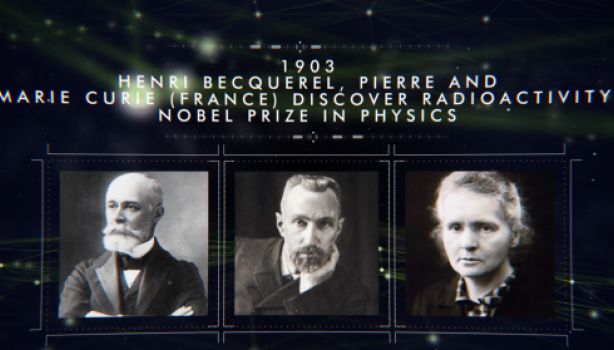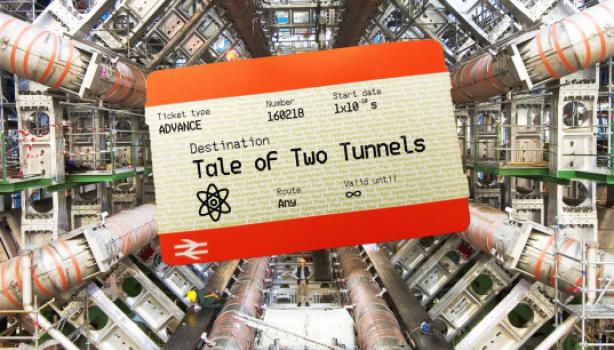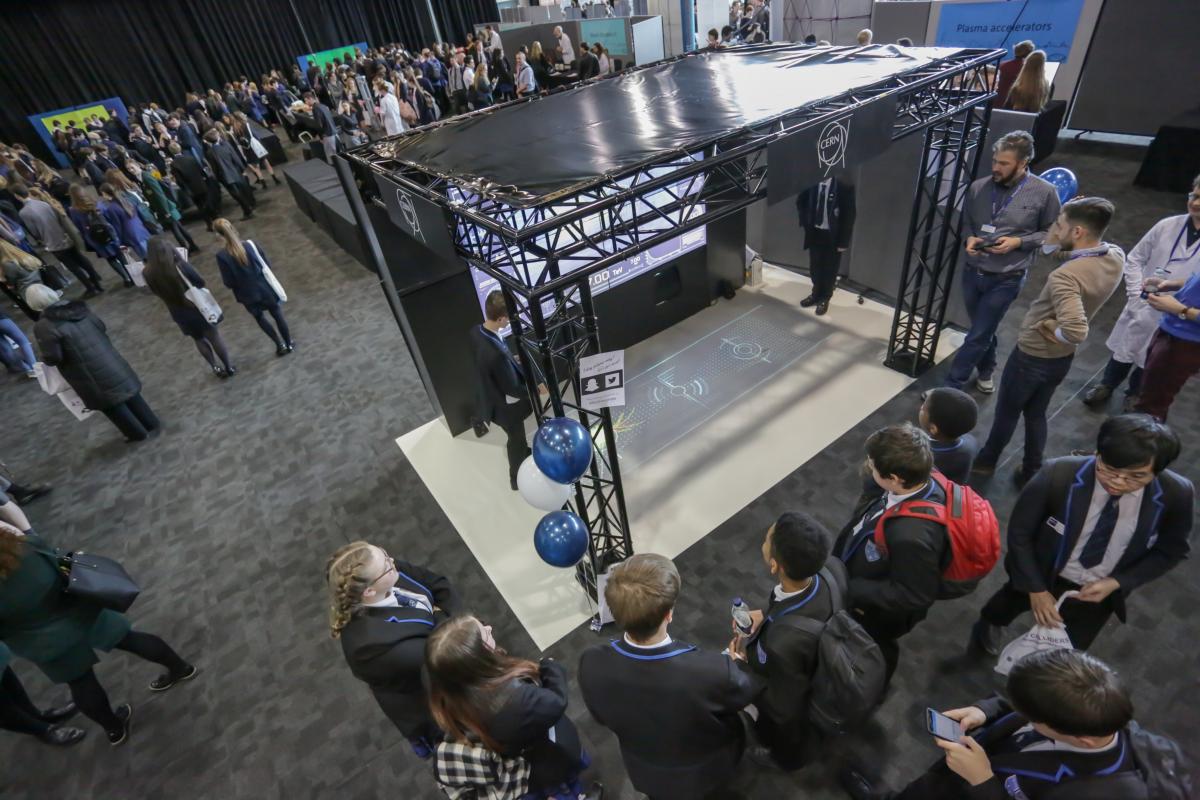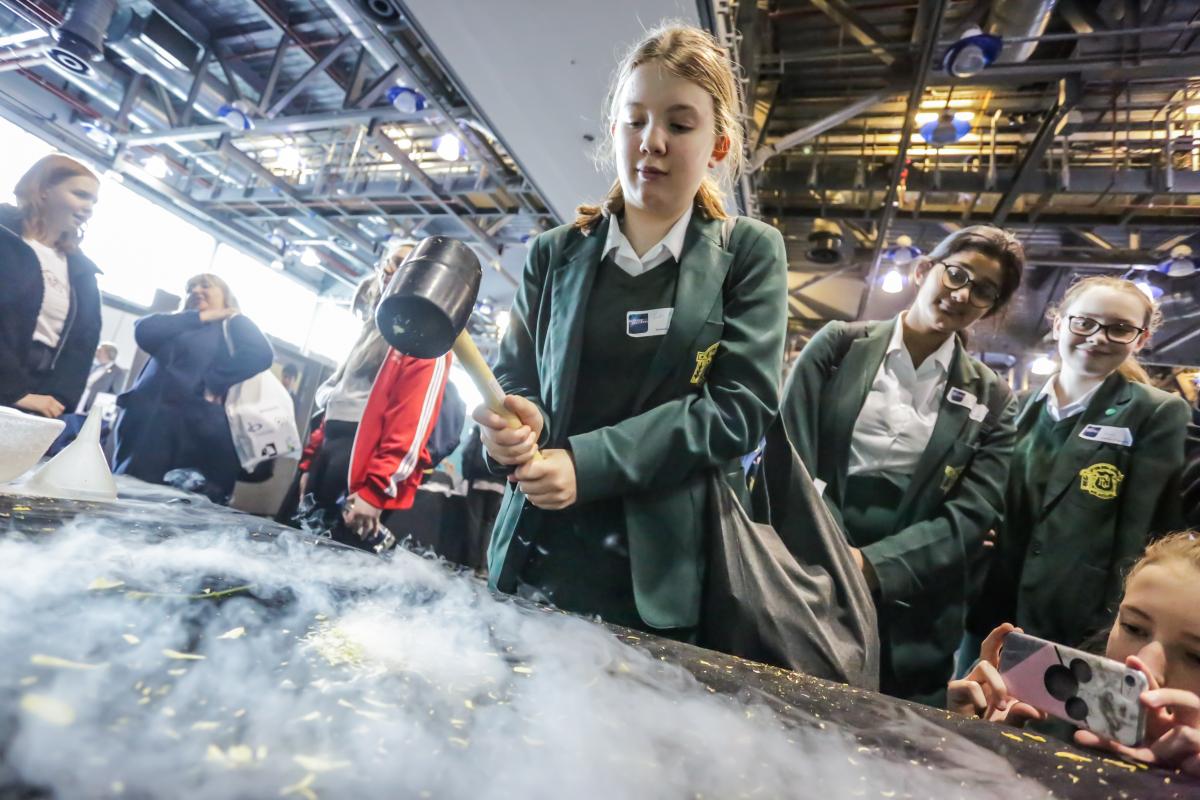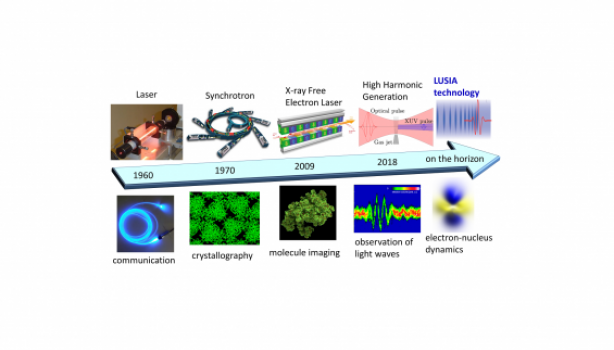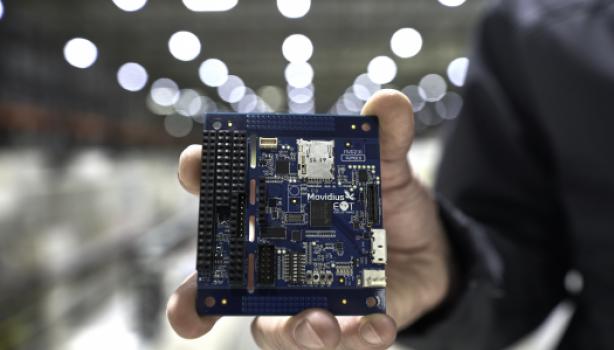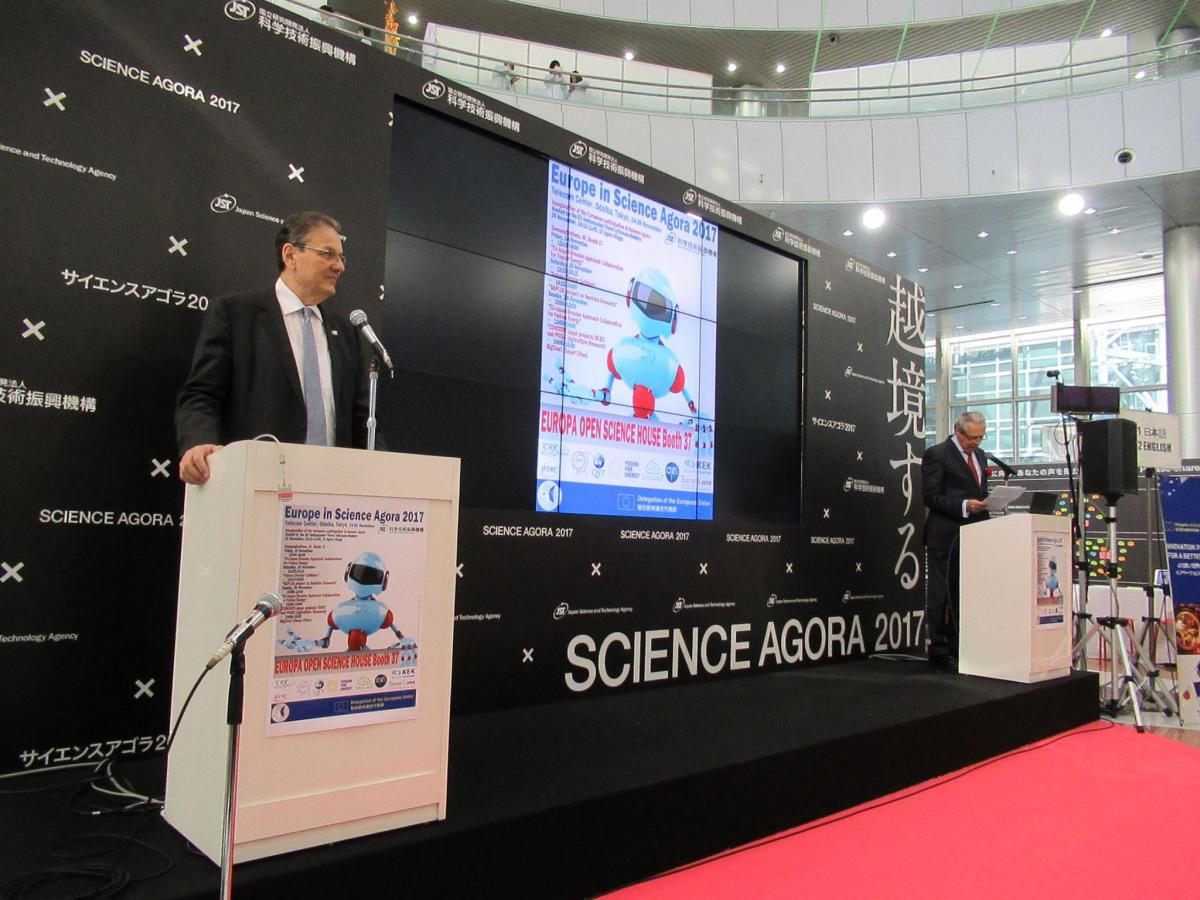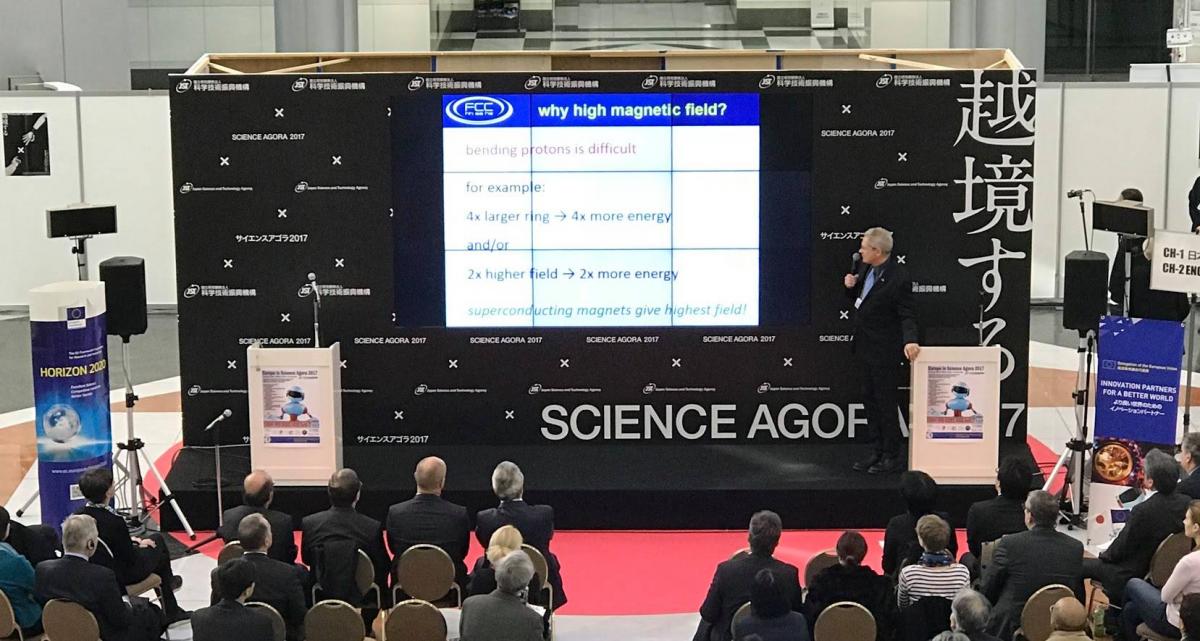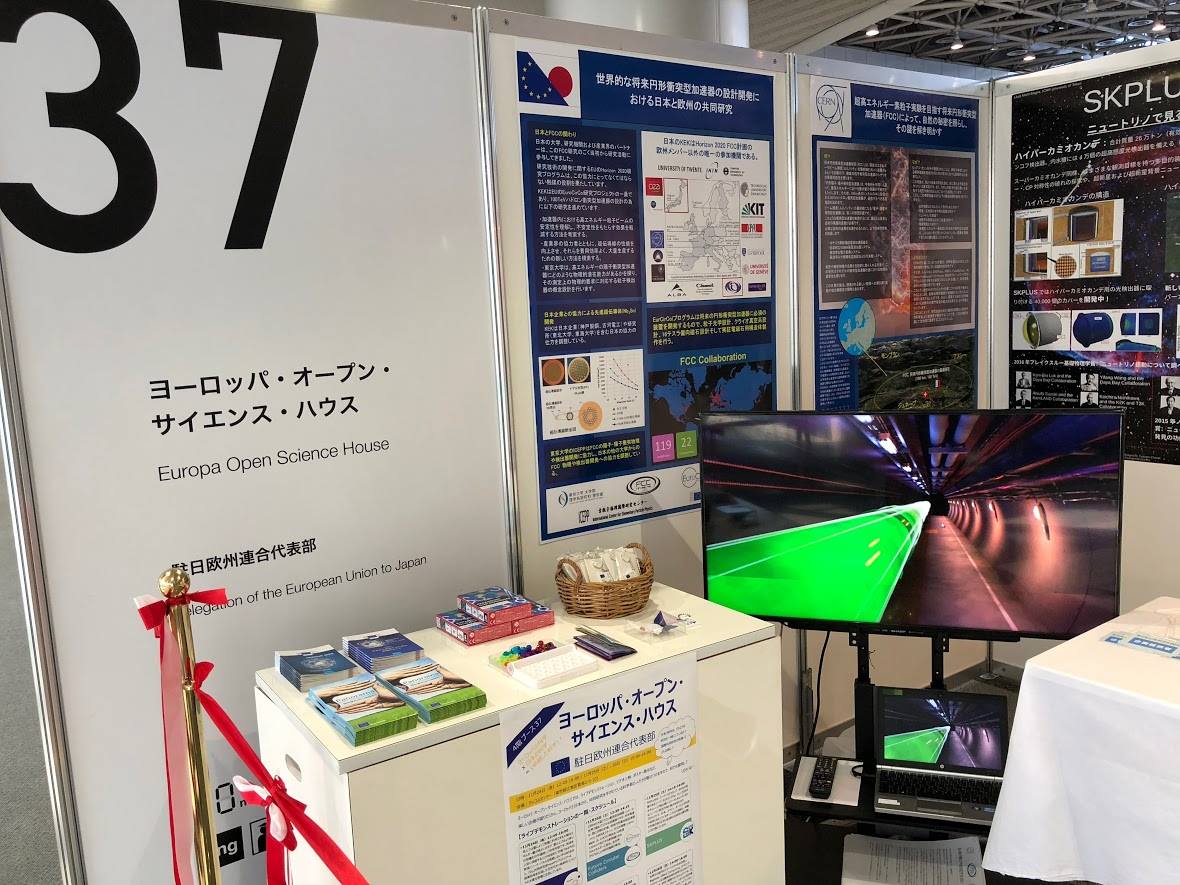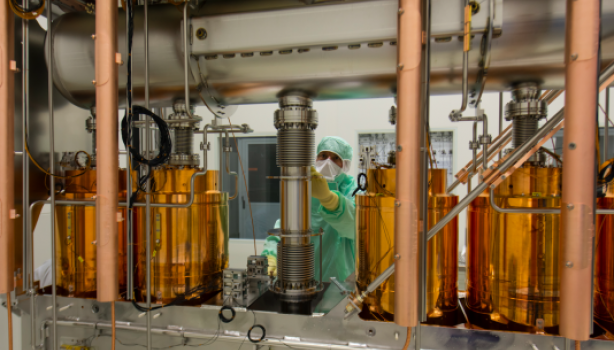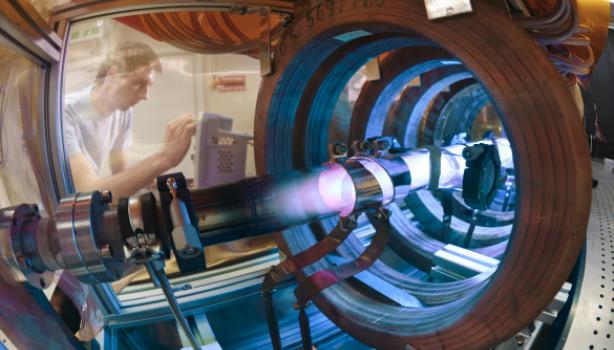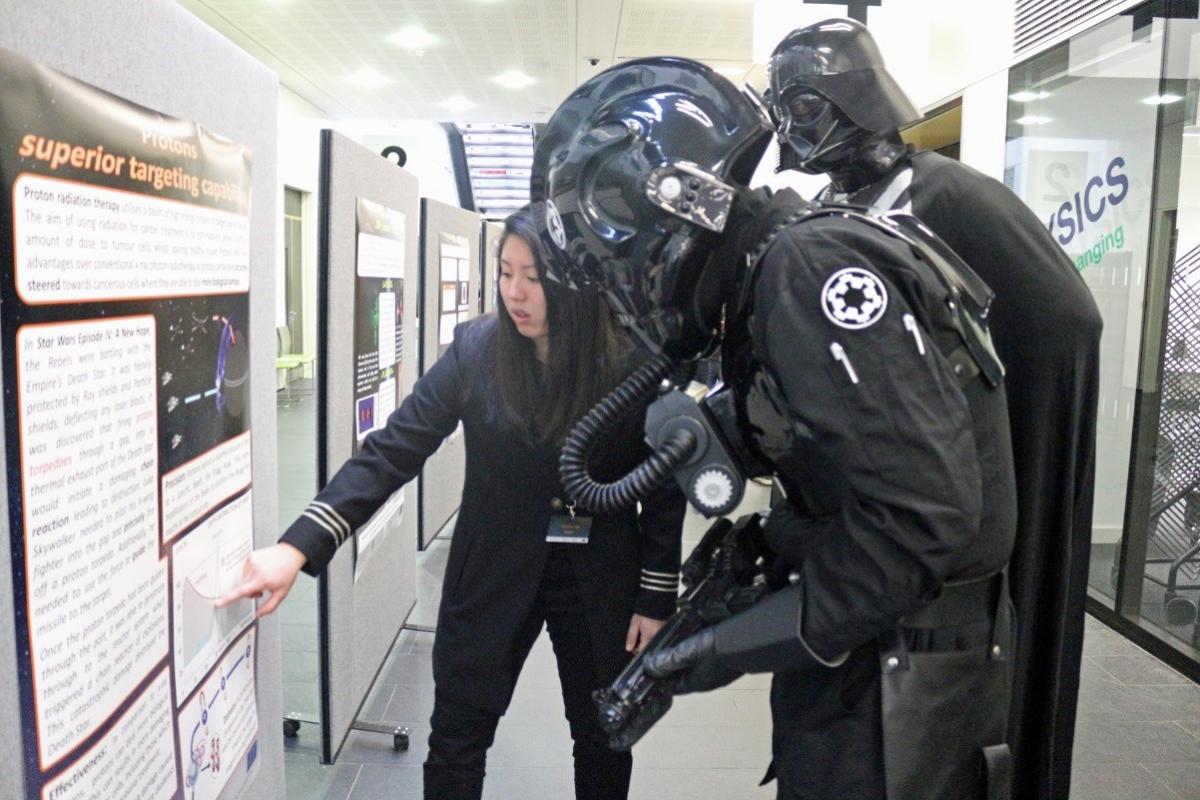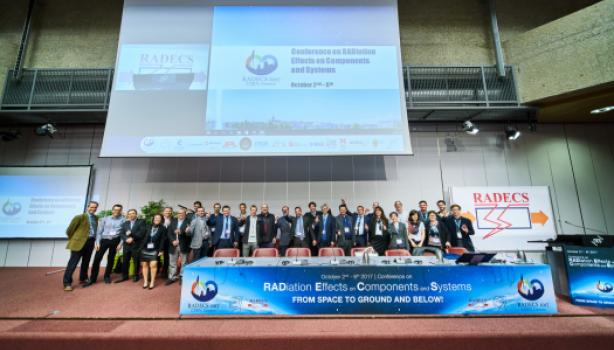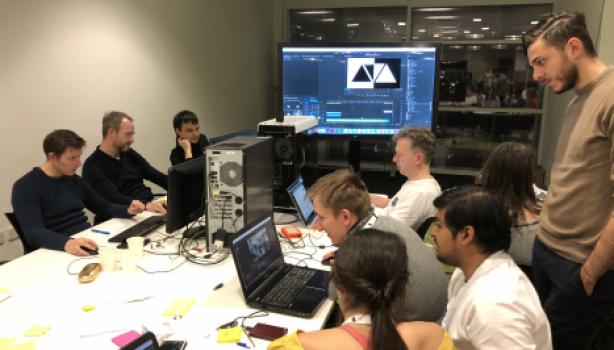3rd Prototype of the FCC-hh beam screen, manufactured according to the current base line design, during alignment procedure at BESTEX. (Image: CERN)
The Future Circular Collider Study, supported through the EU-funded H2020 EuroCirCol project, was conceived as a conceptual design study for a post-LHC research infrastructure combining an energy-frontier 100 TeV circular hadron collider (FCC-hh) with a lepton collider (FCC-ee) as a first step, both housed in a new 100km tunnel. The EuroCirCol project was divided in five work packages (WP) with the goal to develop the necessary key technologies to go beyond the current state–of-the-art. Among them, the “Cryogenic vacuum system” Work Package (WP4) was established to develop the technical design concept for the FCC-hh vacuum beam-pipe, based on the requirements and constraints derived from the design of the overal 100km ring and the bending magnets.
Such challenge was successfully overcome by the different tasks under WP4: the smooth cooperation among the different teams contributing to this goal resulted in the development of an overall integrated design for the cryogenic beam vacuum system that could cope with the requirements posed by the very energetic beams of FCC-hh.
A critical component of the cryogenic beam vacuum system is the so-called beam screen. It protects the cryogenic (1.9K) dipole magnets from the direct irradiation of the synchrotron photons. This radiation is originated when the hadron beam trajectory is bent as it passes through the dipole’s magnetic field. During its operation, the hadron beams stored at the collider FCC-hh would originate unprecedented levels of radiation for hadron machines, in such way that the accelerator power and flux will be orders of magnitude higher than those of the LHC. These facts made the design of the FCC-hh beam screen a very challenging task for WP4 of the EuroCirCol project. The working temperature, dynamic vacuum pressure, as well as the photo- and secondary electron population are just some of the many parameters that were optimized by intensive engineering studies, to satisfy the required conditions for the correct operation of FCC-hh.
In such framework, the necessity of studying the vacuum and cryogenic performance of the actual FCC-hh beam screen prototypes arose as a key step for the design validation. To this end, a Beam Screen Testbench EXperiment (BESTEX) was build and put in operation by the collaboration.
Fig.1: Schematic description of BESTEX and its functionality.
The goal of the measurement setup was to determine the synchrotron radiation photodesorpotion yield, reflectivity, heat loads, and photoelectron yields inside the FCC-hh beam screen prototypes. In order to perform the experimental work under conditions similar to those foreseen for the real machine, BESTEX was designed to be installed at the synchrotron radiation source KARA (previously known as ANKA) at the Karlsruhe Institute of Technology (KIT) in Karlsruhe, Germany. KARA was chosen due to its similarity with FCC-hh’s photon flux and power spectra. KARA’s synchrotron critical energy at its nominal 2.5 GeV operation is 4.2 KeV while for FCC-hh, at nominal operation (50 TeV per beam), it is expected to be 6.2 KeV. Such similarity results in a high resemblance of flux and power across the whole photon energy spectrum.

Fig.2: Left Luis Antonio González, Right Left Miguel Gil-Costa during installation of the first FCC-hh beam screen prototype for commissioning at BESTEX. (Image: FCC)
In October 2015, the conceptual design of BESTEX started at CERN by two project associates at the Vacuum Studies and Measurements (VSM) and Design Logistics and Methods (DLM) sections from the Vacuum, Surfaces and Coatings (VSC) Group at CERN. On 19 July 2017, the irradiation of the first FCC-hh beam screen prototype took place at BESTEX (see Fig.2). Between these two dates, all the components were designed and manufactured. The control system of BESTEX, as well as its data acquisition software, were also developed. BESTEX was assembled, aligned and fully commissioned at CERN before being disassembled and shipped to KARA for the final installation. A strategy was developed, allowing its re-assembly the setup after transportation to KARA without compromising the accuracy of the alignment. Such capability was achieved by developing a system formed by fiducialized callipers and vacuum compatible linear actuators. Since its first run, BESTEX has performed measurements of synchrotron radiation-related effects on several samples. As the design of FCC-hh evolved after each improvement iteration, new prototypes have been manufactured according to each different design.
The processes performed at CERN, as well the installation of BESTEX at KARA, were carried out in close collaboration with the Institute for Beam Physics and Technology (IBPT) team at KIT, allowing to efficiently synchronize and optimize the tasks succeed in such challenging project.
The measurements performed at BESTEX have allowed to optimise the beam screen design process by confirming the performance foreseen by simulations. Moreover, data acquired after acquisition of high photon doses makes possible to predict the vacuum performance of the FCC-hh beam screen during machine operation. Such measurements have been a key input for the development of the FCC Conceptual Design Report (CDR) published in July 2019.
BESTEX remains now an extremely valuable R&D experimental setup from CERN. It provides the necessary resources to perform numerous synchrotron-related experiments, not only on FCC-hh technical samples, but also to perform fundamental material properties’ studies on materials of interest for the realm of the particle accelerators.

